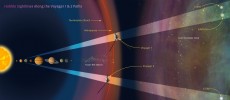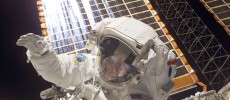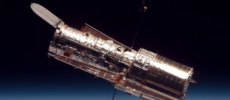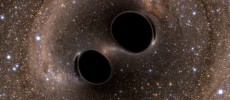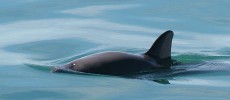Hubble Monitors Voyager Probes as They Exit Solar System
NASA's longest space mission is now entering a new phase, as the Voyager 1 and Voyager 2 space probes exit the solar system into interstellar space, the farthest distance any man-made space probe has ever ventured. The Hubble Space Telescope is monitoring their paths into deep space to learn more about the outer reaches of the solar system and beyond.

